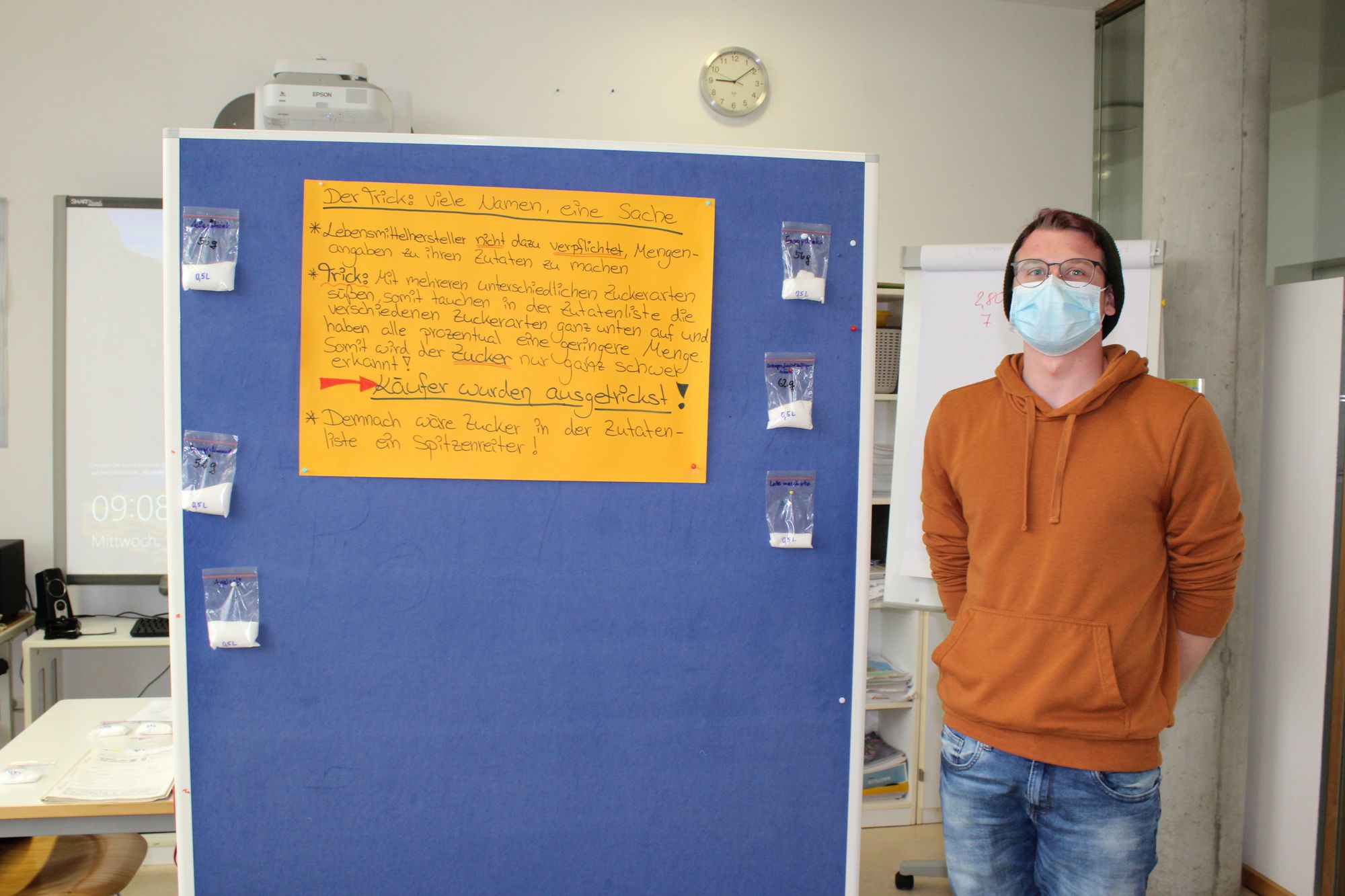How much sugar can I have?
Healthy nutrition in our vocational school
In principle, we already know that processed foods often contain sugar. But the exact amount and the tricks manufacturers use to confuse consumers are very surprising. This was also the experience of vocational students in home economics. They took a closer look at ingredient lists and nutritional value tables as part of the topic "healthy nutrition" and then created posters on various topics and presented them.
The first group examined the problem that often several types of sugar are hidden in a product, so that consumers don't even recognize them as sugar and are thus tricked as to the amount of sugar they actually contain. The most simple - and healthiest - solution would be not to use ready-made products or processed foods, but instead to prepare meals with fresh ingredients.
Group 2 found out that children's snacks in particular contain between 30 and 40% sugar. In addition, these are often also far too fatty, i.e. absolutely unhealthy, especially for children. Even ketchup consists of 1/5 sugar, barbecue sauce even of 1/4. The vocational school class would therefore like to learn how to make ketchup by themselves.
The third group explored what consequences the excessive consumption of fructose has for the body: It can increase blood pressure and uric acid levels and lead to intestinal problems, fructose intolerance and, in the worst case, fatty liver, since it is metabolized directly in the liver. Even though fructose is considered a contributor to obesity worldwide, the industry likes to use it because it has a higher sweetening power than table sugar, making it cheaper, and also less filling.
Enormous sugar consumption poses many other health risks, such as diabetes, tooth decay, cardiovascular disease or inflammation, and can even be a risk factor for dementia and cancer. That's why it's important to develop strategies for reducing your own sugar consumption in the long term: You should plan your food shopping, cook with fresh ingredients, read ingredient lists carefully and pay attention to the sugar content, don't go shopping hungry, and take stress-regulating measures if you do have a craving for something sweet due to stress or frustration.



